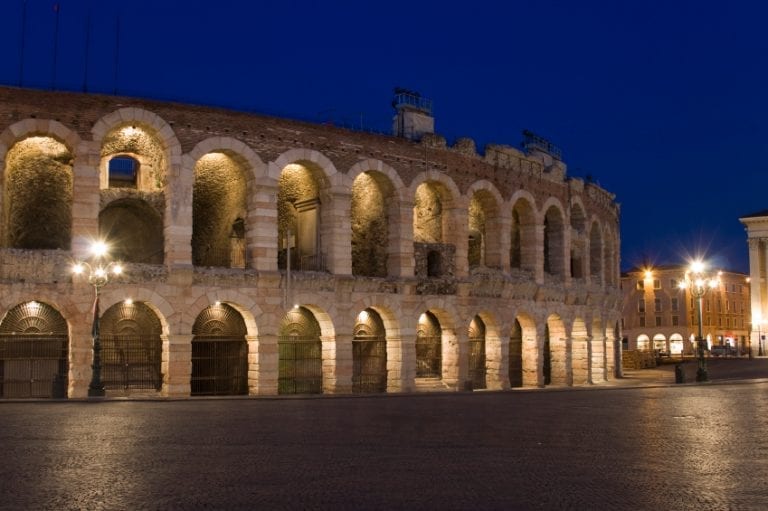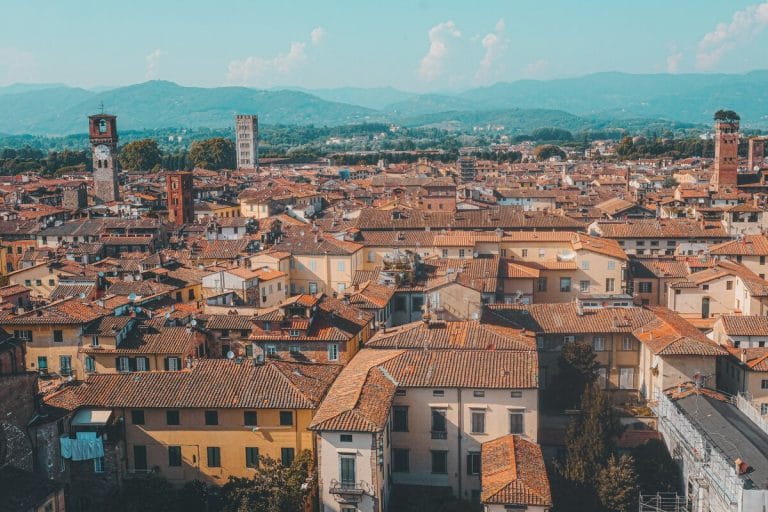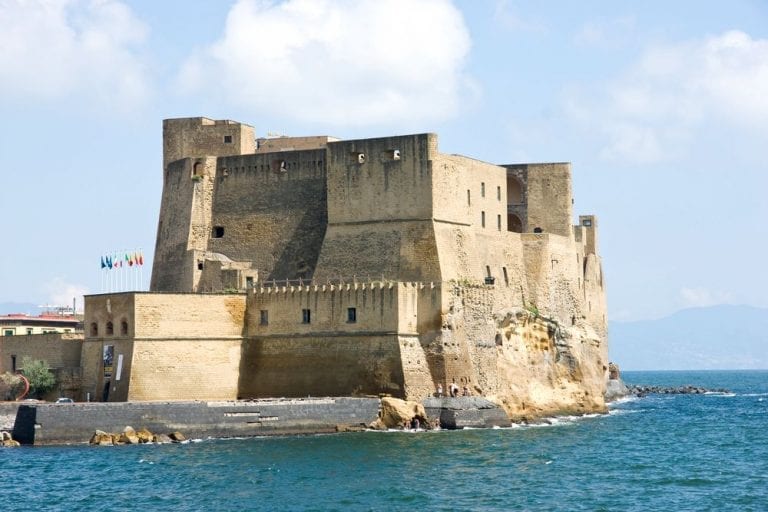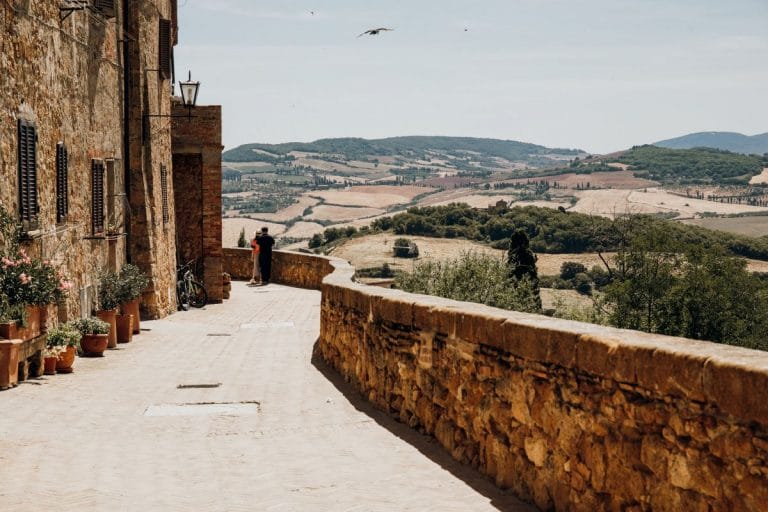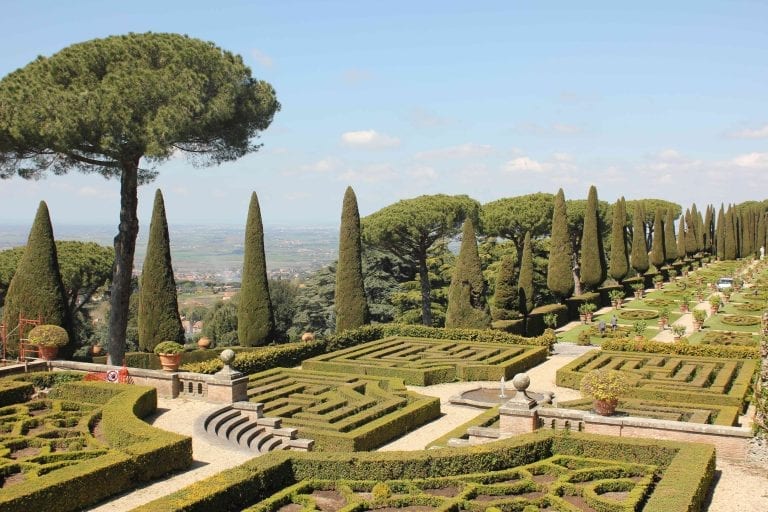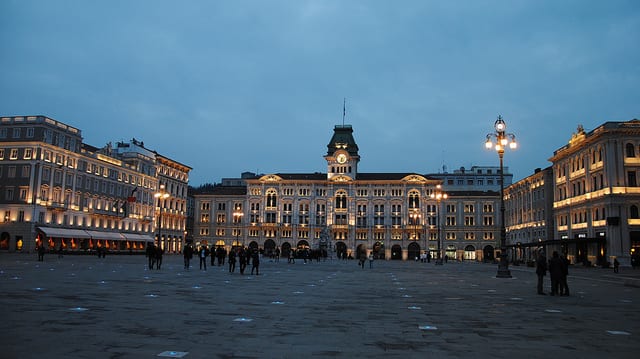
Trieste, Italy: The Walks of Italy Guide
February 16, 2023
Trieste, Italy is a city at the crossroads. This important port town has passed through the hands of the Romans, the Venetians, the powerful Hapsburg monarchy (who poured money into it), and the Germans during WWII. In fact, it was only returned to Italy in 1954. Between land and sea, war and peace, it has developed a unique and vibrant culture that sits somewhere between Austrian, Italian, and Slovenian.
The Austrian architecture, café culture, and seaside views have attracted writers and artists for decades, including luminaries like Italo Svevo and James Joyce. Sigmund Freud also loved the city. Today Trieste is the capital of the region Friuli-Venezia Giulia, one of the richest in all of Italy, and continues to enchant travelers looking for an off-the-grid destination filled with history, art, and a unique cuisine.
Planning a trip to Trieste? Here’s what to see, do and eat in this fascinating city:
Table of Contents
ToggleWhat to see in Trieste:
Castello Miramare
The ornate Castello Miramare sits perched between cliffs and sea just 5 km outside of Trieste. The restless Archduke Maximilian of Austria built the castle between 1855 and 1860. Inside you’ll find testaments to his vanity as well as wealth, with portraits hung in nearly every room, different dining rooms for winter and summer and a throne room that was never used. The Archduke was executed in Mexico after trying to establish himself as its monarch during one of the more outlandish empire-building adventures of the 19th century. Ironically, he was well-liked by almost everyone who knew him and he refused repeated attempts to help him escape his fate, apparently out of love for Mexico. His final words:
“I forgive everyone, and I ask everyone to forgive me. May my blood which is about to be shed, be for the good of the country. Viva Mexico, viva la independencia!”
This castle, like the man, is quite agreeable, if a little over the top. After admiring the beautiful views from its wrap-around balcony, you can explore the 22 acres of gardens and rest to the sound of the waves lapping against the rocks below.
More information
The castle is opened from 9:00am to 7:00pm. Tickets cost €8.00. Admission to the park is free.
Viale Miramare, Tel. +390 40 22 41 43.
La Risiera di San Sabba

The old Risiera in Trieste Italy | Photo via from the Comune di Trieste
You shouldn’t visit Trieste without taking a moment to learn about one of the darkest chapters in its history. During WWII the Nazis transformed the old Risiera, or rice mill, into a prison and concentration camp. It was the only Nazi concentration camp with a crematorium in all of Italy. It was used to detain, transport, and kill political prisoners, an estimated 3,000 of whom died here. Though the citizens of Trieste knew that the Nazis had occupied the building and were using it as a prison, the SS officers used loudspeakers and bonfires to block the noise of killing and smell of corpses, purposefully keeping the cremations secret as the war was ending. This museum is a sad stop, but also an important testament to Trieste’s suffering during the war – definitely one of the more profound things to do in Trieste.
More information
The museum is open every day from 9:00am to 7:00pm. Entrance is free. Audioguides cost €2.00 but are highly recommended to understand the more or less empty spaces. Take bus n. 8 or 10 to arrive at via Giovanni Palatucci, 5
Piazza Unità d’Italia
The architecture and enormity of Piazza Unità d’Italia are enough to stop most any visitor to Trieste in their tracks. It’s Italy’s largest sea-facing piazza and has always stood as a symbol of the port town’s power. It owes its creation to the empress Maria Theresa of Austria whose 18th-century reign heralded the city’s most prosperous age. She recognized the importance of the city as the Hapsburg Empire’s only port and flooded it with money. The massive Piazza was created in the process as a symbol of the Empire’s incredible architecture and urban planning.
Go during the evening to ogle the decidedly Viennese architecture, sip a spritz and watch as the lighthouse turns on over the bay.
Trieste Cathedral
The St. Justus Cathedral is the main church in Trieste and an enduring symbol of the city. It was built atop two previous churches in 1300. Outside you’ll find a large Roman rose window and a statue of St. Justus from 1337. Inside are magnificent Byzantine mosaics reminiscent of those in Ravenna. The most impressive is an image of Christ against a gold background dating to the 1200s which you’ll find in the Chapel of San Giusto.
Il Ghetto and The Synagogue of Trieste
To truly understand the city’s history and mix of cultures, be sure to stop at the Synagogue of Trieste. Built in 1912, it is the largest in Western Europe and one of the continent’s most important. Though it was closed in 1942, the Synagogue went back into operation as soon as the war was finished.
More information
The Synagogue is open Sunday mornings for independent travelers or Mondays and Wednesdays at 3:45pm, 4:45pm or 5:45pm and Tuesdays at 9:30am, 10:30am or 11:30am for (mandatory) guided tours. Entrance costs €3.50 per person. Address: via San Francesco, 19
Joyce and Svevo Museum
There are many museums to tour in Trieste, but why not dive into the minds and work of Trieste’s most celebrated authors at the Museo di Joyce e Svevo? Here you can see the cafés and pubs where Joyce was a regular, as well as photos, first editions and other works from both of the authors.
For more on Joyce’s life in Trieste check out our blog on traveling Italy in the footsteps of great writers.
More information
The museum is open Monday through Saturday 9:00am to 1:00pm and Thursdays 3:00pm to 7:00pm. Address: Via Madonna del Mare 13, 2nd floor.
Canal Grande
The Canal Grande is just what its name implies: A long, wide canal in the center of the Teresiano neighborhood. The Borgo Teresiano was built in the 18th century by Maria Theresa and hints at 19th-century religious tolerance with the Serbian Orthodox Church adjacent to the Catholic Chiesa di Sant’Antonio Taumaturgo. There’s also a life-sized statue of James Joyce on the Roma bridge.
La Grotta Gigante
One of the most interest things to do in Trieste is to enjoy the natural landscape. The city is located on an enormous limestone plateau extending across northeastern Italy and into southwestern Slovenia called the Karst. The Karst is most famous for its many cave systems. If you like to explore one try the nearby Grotta Gigante, one of the largest tourist caves in the world. One cavity inside the cave is said to be large enough to hold St. Peter’s Basilica. You can also visit the Cave of Trebiciano, also known as the Abyss of Trebiciano because it plunges a staggering 1,150 feet into the ground. At the bottom flows the Timavo River which continues on into Slovenia to the Škocjan Caves, a UNESCO World Heritage site. (Though it’s in Slovenia, it’s really only about 19 miles from Trieste.) The river flows into the sea near Duino in Italy in a series of springs that the Romans thought were the entrance to the underworld.
What to eat
The best way to experience Trieste’s mingling of cultures is by sampling its food. Next to more traditional Italian dishes you’ll find the traditional Trieste dishes which have decidedly MittelEurope tendencies. You’ll also find Eastern European ingredients that are non-existent in the rest of Italy, such as cabbage, cren or horseradish, and mustard. Goulash and cabbage rolls are Other Trieste favorites.
For a taste of these “un-Italian” ingredients, try the jota soup. Made with fermented cabbage, not unlike sauerkraut, the cabbage is boiled for hours with red beans. Sausage, smoked pork, and often potatoes are then added, making a deliciously smooth, creamy, and hearty dish. The gnocchi in gnocchi de susini are Italian, but cooking them with fruit, sugar and cinnamon is most definitely not. The gnocchi are prepared with ripe plums, egg, cinnamon, and sugar, but eaten as a first course – a unique experience that is an absolute must while visiting Trieste.
Given that Trieste is a port town, you can’t ignore the fish. Sardoni, or large sardines are one of the most typical dishes. Usually they’re served breaded and fried, sometimes in a vinegar and onion marinade. You can also find bass, tuna, mussels, clams and cuttlefish prepared in a variety of ways, whether from the gulf of Trieste or imported.
What to Drink
Whether you go with meat or fish, you’ll have a perfect wine to pair it with. The region is home to some of Italy’s top wines, including Refosco, Merlot, Chardonnay, Pinot Bianco, Pinot Grigio, Sauvignon Blanc, and Terrano from the Carso region just outside of Trieste. The Triestini know how to make wine, and they certainly know how to drink it. Bars are frequented at all hours of the day, because, the thinking goes, all hours of the day are a good hour for a small glass of delicious wine.
Among foreigners, the most famous culinary culture of Triest is probably coffee. Although Venetians would challenge this statement, Triest probably has the finest coffee and cafe culture in Italy. Its long history as a tax-free port brought some of the first coffee beans to the city during Europe’s first coffee craze. Today Italian coffee king Illy has its headquarters there and the city still imports many other brands as well. Order a caffe triestino to get a small espresso with a dollop of whipped cream on top.
Something Sweet
Channel your inner James Joyce and pair that coffee with the city’s mouth-watering desserts. Here is where you’ll see the Viennese influence with strudel, sacher, and krapfen or doughnuts available everywhere. Trieste’s most famous desserts, however, are without a doubt the pinza, presnitz, and putizza, respectively an Easter cake, another Easter cake and a Christmas cake. These are cooked with walnuts, raisins, pine nuts and dried oranges, among other things. You’ll never want for dessert choices here!
Know Before You Go
Though you can see much of Trieste in two days, give it at least three to truly experience the ins and outs of the city. Give yourself five days or more if you want to take day trips to the caves or other nearby cities. Though parts can be hilly, the city is extremely walkable – you can see most of it on foot. To get to the Risiera, which is a bit outside of the city center, consider a taxi or take advantage of Trieste’s excellent bus service for just a bit over €1.00 per ticket.
Although Trieste is a captivating city year round it has a very particular atmosphere that is mysterious to the point of melancholy. Warm street lamps shine through the fog that rolls in from the port in the winter and light up long nights in the summer. The start of winter means the enormous Piazza dell’Unita di Italia will be decorated with Christmas lights and pine trees and the Christmas markets come into town, but warmer weather means opportunities to enjoy Trieste’s coffee culture and supreme happy hours at outdoor tables. No matter when you go, be sure to bring a scarf and jacket to protect yourself from the region’s strong Bora wind, an audacious and at times frigid wind from the northeast that blows often.
by Gina Mussio
View more by Gina ›Book a Tour

Pristine Sistine - The Chapel at its Best
€89
1794 reviews

Premium Colosseum Tour with Roman Forum Palatine Hill
€56
850 reviews

Pasta-Making Class: Cook, Dine Drink Wine with a Local Chef
€64
121 reviews

Crypts, Bones Catacombs: Underground Tour of Rome
€69
401 reviews

VIP Doge's Palace Secret Passages Tour
€79
18 reviews

Legendary Venice: St. Mark's Basilica, Terrace Doge's Palace
€69
286 reviews












